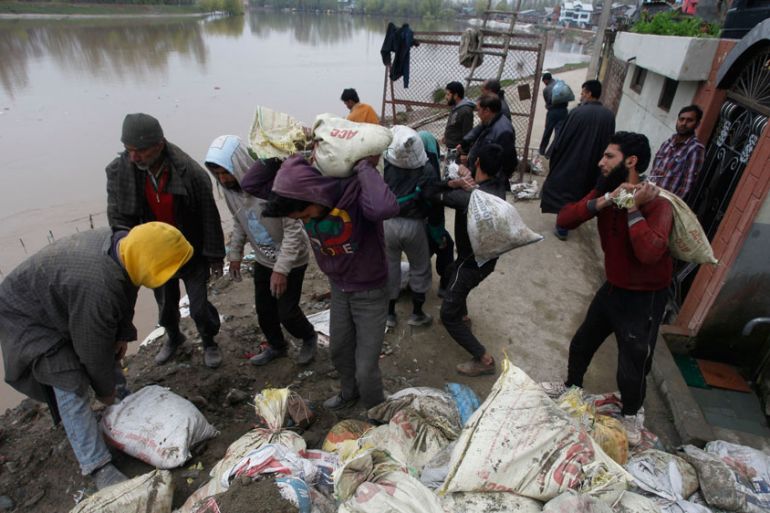Deadly weather spreads across northern India
Northern and eastern parts of the country have experienced severe conditions well ahead of the summer monsoon.

Severe weather has killed scores of people in the north of the country in recent days.
The recent flooding in Jammu and Kashmir states, brought about by days of heavy rain, has eased, albeit temporarily.
Keep reading
list of 4 itemsAfter the Hurricane
World’s coral reefs face global bleaching crisis
Why is Germany maintaining economic ties with China?
To date, 17 people have been killed, 15 of the fatalities occurring when a house in Ledhan was engulfed by a massive landslide.
In Srinagar, the Jhelum River stood at 5.17m on Wednesday, just 0.3m below the flood level. On Monday afternoon the river peaked at 6.85m in Sangam and 6.0m in Srinagar.
Reacting to criticism that they failed to respond quickly enough to last year’s flooding, which destroyed thousands of homes and caused $17bn worth of damage to infrastructure, the government has brought in troops to help with relief operations, and to help shore up river defences.
The Indian Meteorological Service has predicted further heavy rain in the coming days.
Rainfall in the far north of India is much less dominated by the summer monsoon than elsewhere in the country. March and April are the wettest months as weather systems approach from the west.
Meanwhile, the east of the country has experienced some severe storms. In the state of Bihar at least 20 people have been killed in a series of storms which has produced lightning, torrential rain and damaging winds.
There were reports of collapsed houses in the state capital Patna, and in Purina and Katihar districts.
These severe storms are a feature of the weather ahead of the southwesterly monsoon and they are known as ‘kalboishakhis’.
In the coming days these storms may occur in Bangladesh and the far eastern states of India.